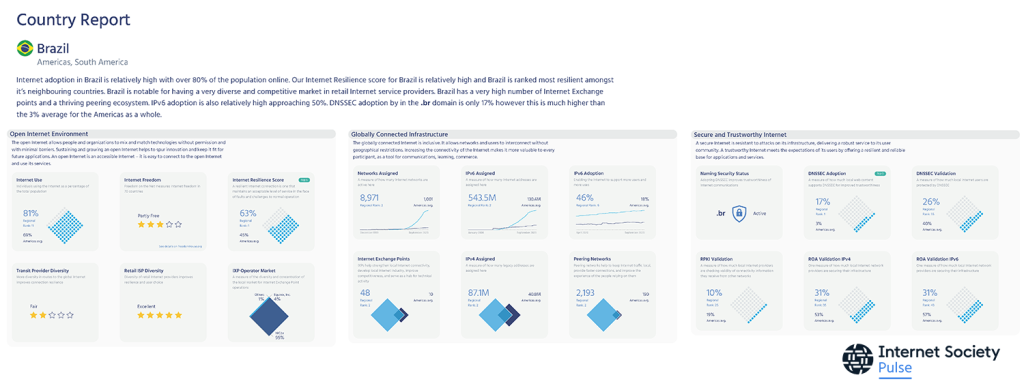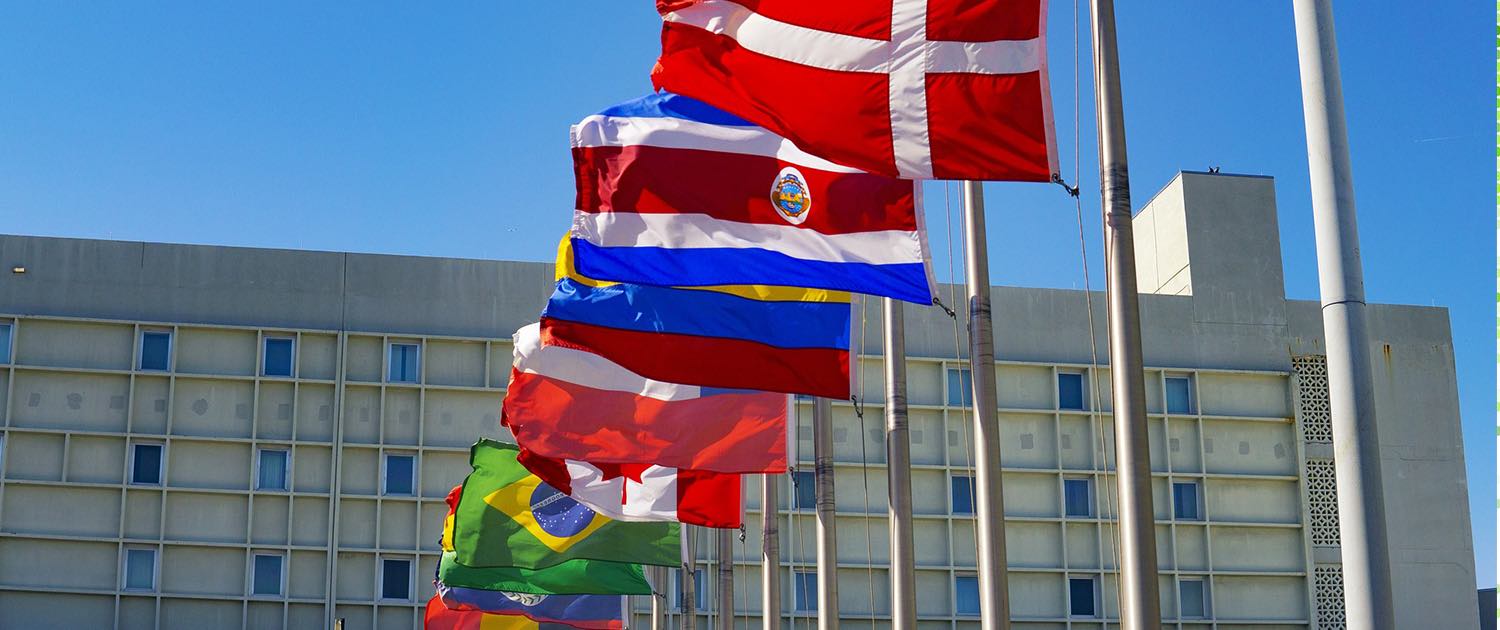Measuring the health, availability, and evolution of the global Internet is no easy task. There are many factors that impact the Internet and many projects that measure these impacts.
A key to making sense of the terabits of data these measurement projects produce is to focus on significant factors that affect the Internet. In the case of Pulse, we track four such factors:
- Internet shutdowns
- Internet technologies
- Internet concentration
- Internet resilience
While the Internet is not bound by geopolitical borders, it’s natural that many people are interested to know the strengths and weaknesses of the Internet in their own country. The Internet Society Pulse Country Reports help with this by consolidating and providing context surrounding the four Pulse research themes for every country, state, and region.
Find your Pulse Country Report
A Holistic View of Each Nation’s Internet
The Pulse Country Reports can assist:
- Policy and decision-makers understand what aspects of the Internet need to be improved and work towards enabling policies to support improvements.
- Civil society groups and journalists to advocate and lobby for more investment and improvements to infrastructure and security in low-scoring areas.
The Pulse Country Reports illustrate data that Pulse collates from various open sources, including APNIC Labs, Facebook, Google, ICANN, IIJ, ITU, Mozilla Firefox Telemetry, PeeringDB, and W3Techs. This data explains the health of the open Internet environment, globally connected infrastructure, and secure and trustworthy Internet for each country.
The Reports are divided into three sections:
- Open Internet environment includes metrics for Internet use, Internet freedom, Internet resilience, transit provider diversity, retail Internet service provider diversity, Internet exchange point (IXP) operator market, and Internet shutdowns.
- Globally connected infrastructure includes metrics for networks assigned, IPv4 and IPv6 assigned addresses, IPv6 adoption, number of IXPs, and peering networks.
- Secure and trustworthy Internet includes metrics for naming security status, the adoption and validation of domain name system security, and routing security.

Note: Where we don’t have data for a given metric for a particular country, that measurement won’t be displayed as part of the country report. See the methodology document for more details.
Let Us Know What You Think
If you have any questions or comments about the Pulse Country Reports, please contact the Internet Society Pulse team and subscribe to the Pulse monthly newsletter to get updates and insights into changes to the Internet.


